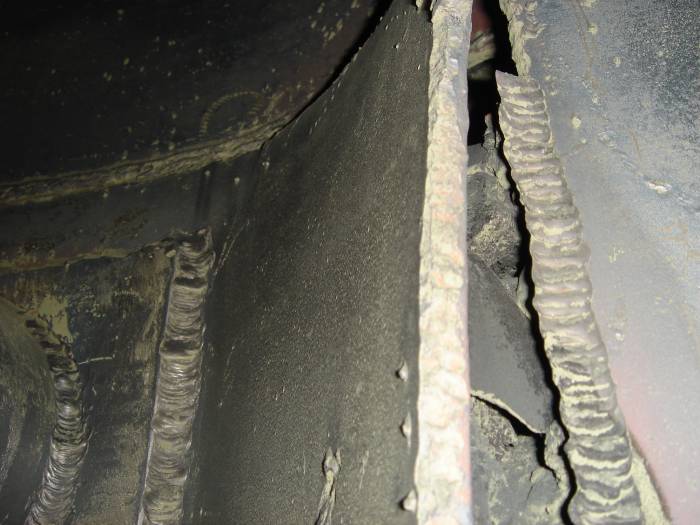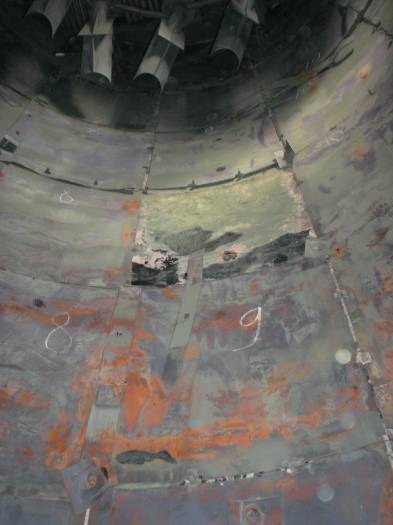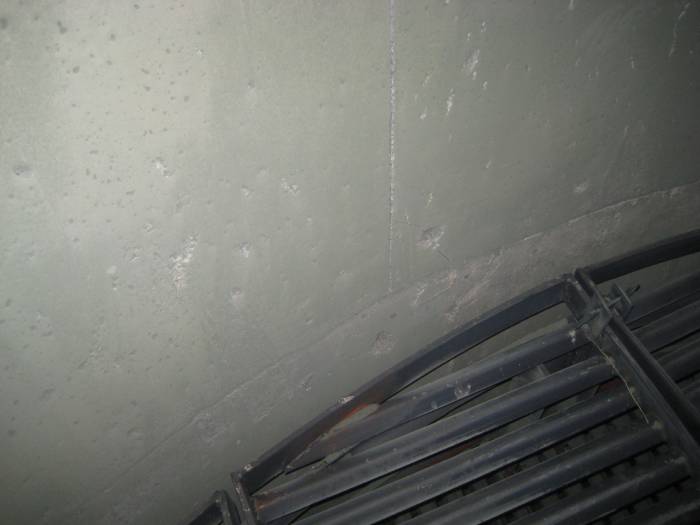Manufacture of Refractories for Isobutane Dehydrogenation Unit Components
Manufacture of Refractories for Isobutane Dehydrogenation Unit Components
Fluidized-bed isobutane dehydrogenation is applied in petrochemical plants to obtain isobutylene which is widely used in synthetic rubber industry.
Operation of isobutane dehydrogenation units is accompanied by frequent shutdowns and repair or replacement of reactor-regenerator internal structures. This results in quite lengthy downtimes and increased OPEX.
In the 2000s, companies operating isobutane dehydrogenation units launched work to increase the turnaround interval of all unit components. The following major challenges in operating the unit were identified:
-
short service life of protective coatings for reactor and regenerator walls;
-
abrasive wear of cyclones, transport lines - flows, internals -supports, sectioning grids, distributors including through defects.
This is precisely why special emphasis is given today to providing refractory linings for all main unit components.
What refractory is better to choose?
The following factors have a profound effect on the inner surface of the unit components:
-
reducing conditions inside the reactor;
-
abrasive effect of the moving catalyst. The most loaded areas: the catalyst transport system-flows (in particular, turning points), cyclones (regenerator cyclones are loaded slightly more since the catalyst is free of coke), and regenerator walls are loaded less.
-
coke formation both on the surface of internals, and in open pores, cavities of all metal structures, linings.
Refractory bricks with steel plates are conventionally used for reactors and regenerators. However, it turned out to be challenging in terms of operation. Commonly, at the time of shutdown, including turnaround planned maintenance, one could observe the failure of steel lining structures and swelling caused by coke buildup, resulting in increased costs for restoration.


What specific properties should refractory concrete materials have?
The specific properties of the refractory concrete materials are attributed to the following factors:
1. Operation zone of refractory. To deal with resistance issue, the refractory materials used in reducing atmosphere should contain no oxides exposed to reduction under such conditions, mainly to ferric oxides.
2. Significant impact of coke formation on steel internals and refractory. Common refractory damage mechanism for cyclones and reactor walls involves chipping, surface scaling caused by the coke deposits on the micropores and rather large extent of delamination, if coke formation occurs in the shrinkage cracks of concrete. To increase the resistance of concrete materials in active coke zones, concrete types with minimal open porosity should be used, and sizing of fillers should be selected to obtain high-density concretes. In this case a refractory of relatively large thickness without any supporting net, reinforcement and v-shaped anchors could be the best solution.
3. Abrasion resistance of castables. The main types of abrasive-resistant castables are classified into conventional high-cement mixes and low-cement mixes. High-cement castables based on aluminosilicate fillers and calcium aluminate cements have cement content of 15–30%. Low-cement mixes have cement content of 5–10%, therefore they are free from above refractory damage defects. The castables are characterized by complex and balanced composition: in addition to granular fillers and cement they contain ultrafine powders, deflocculants, regulators of setting and hardening rate mechanisms. The green strength of these castables is often lower than that of high-cement castables, however, they strengthen significantly already at temperature of 500-600°С and are characterized by high density, strength, thermal shock resistance, chemical and abrasion resistance.

Making the right choice of castable material and installation type for refractory of reactor and regenerator walls and structures will provide the following:
-
reduced risks of the unit emergency shutdown;
-
reduced costs for repair and restoration works by using repair composition only.
SKTB Katalizator offers a full range of engineering services for dehydrogenation process. Today, the competence of Katalizator JSC enables it to develop customized comprehensive production solutions ensuring dehydrogenation unit operation optimization and OPEX reduction, including analysis of existing gunnite refractory.
For more information on isobutene dehydrogenation engineering services, contact +7 (383) 363-76-59 or dhi@katcom.ru.
